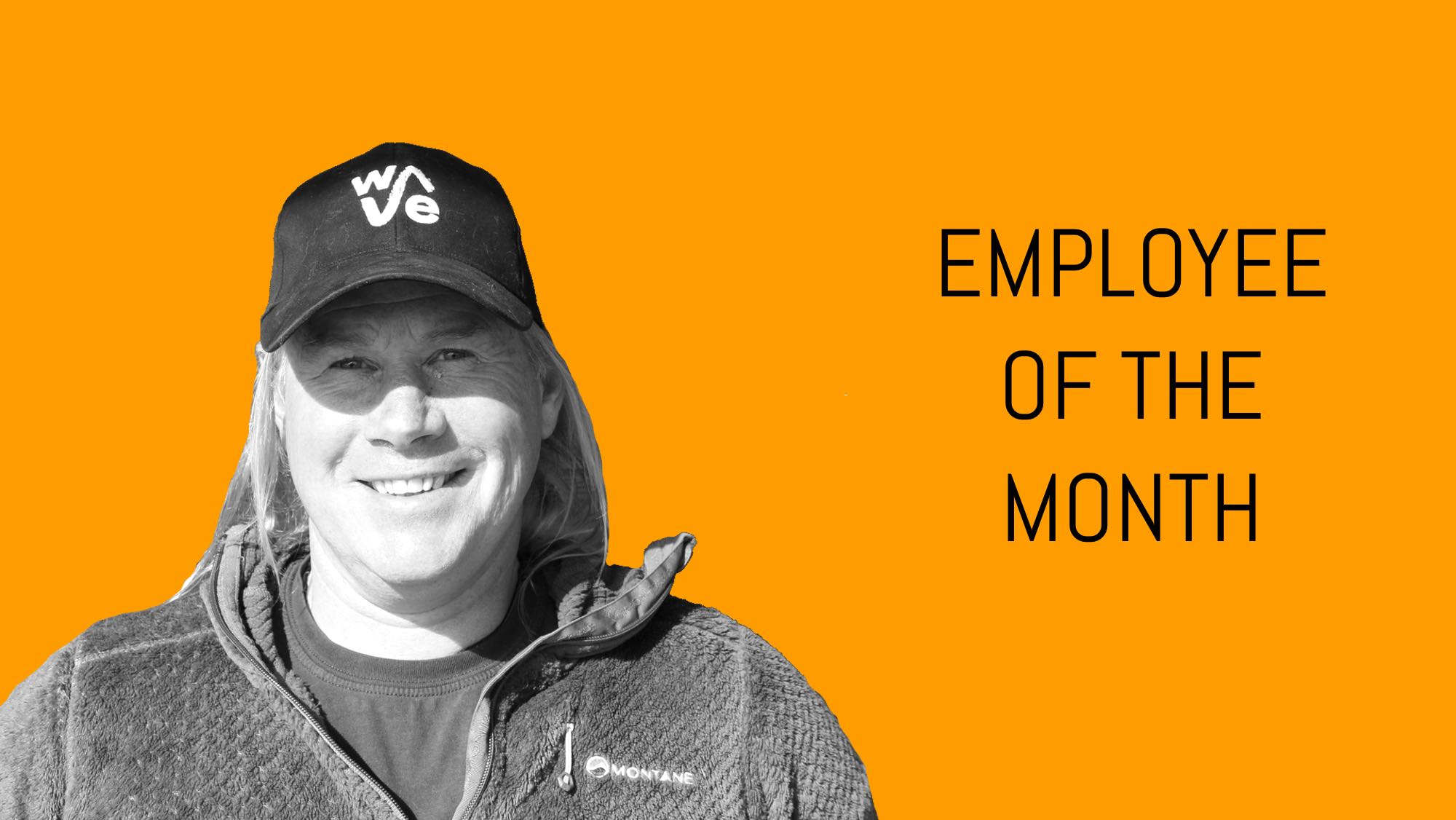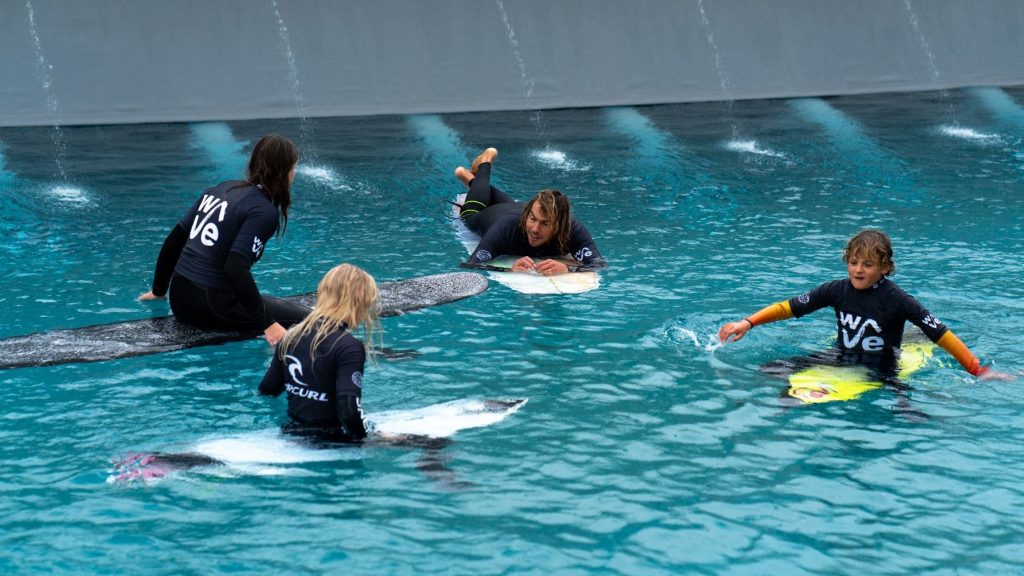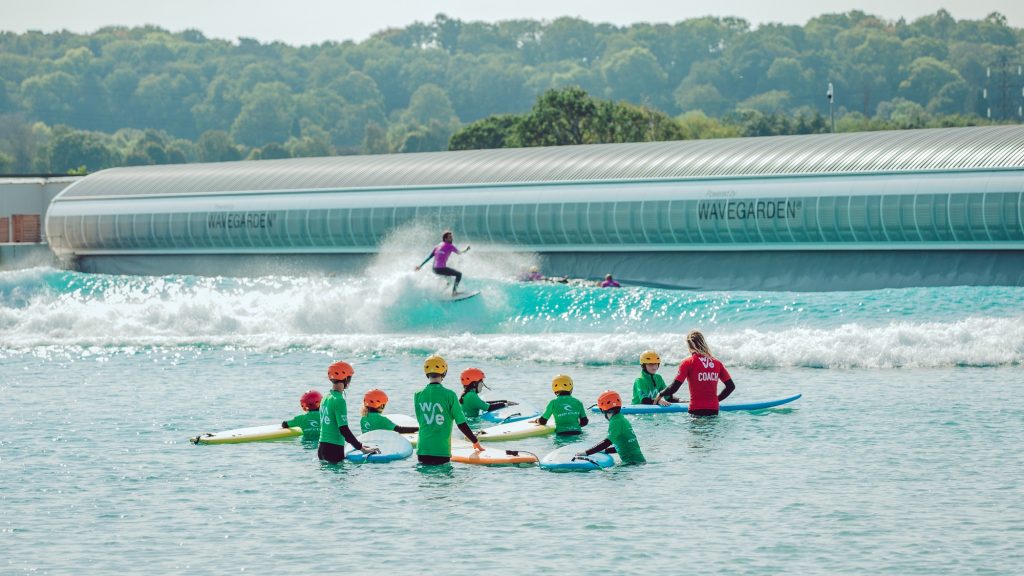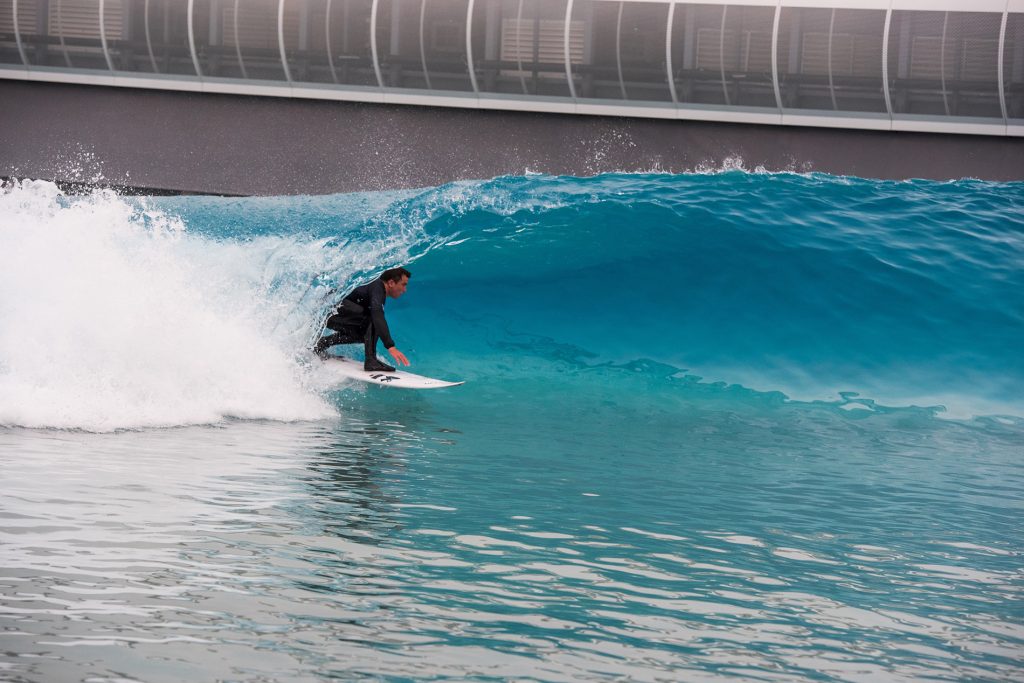OG UK surfer finds perfect position at The Wave, Bristol

Matty Hammersley began venturing into the surf on the Cornish coast nearly four decades ago. It’s hard to imagine the surfers of that era, decked in rigid 80s flouro, envisioning a working, operating wave pool nearby. Fast forward thousands of surf sessions later and now Matty has made his future, having shaped his passion into a role as acting senior surf coach at The Wave in Bristol. It was not that much of a stretch for Matty. He caught the coaching bug in the nineties and soon began aiding competitors. From there he further honed his advisory skills by helping climbers and kayakers throughout the region. We caught up with him between sessions coaching the nation’s expanding surf population.
Matty has been an integral member of The Wave team from day one, and he lives and breathes our purpose, culture and values. Not only is he a brilliant surf coach, he is also a regular surf comp judge, a vintage board enthusiast and avid collector, and – probably most surprisingly – a medal-winning dog sled racer who has represented Great Britain!
– Abby Richardson, the wave
Was coaching an actual thing when you started 25 years ago?
No, it was called “instruction” and it was all beginner lessons. So, you know, your classic taster session, taking people in the water and making sure they’re safe – teach them the very basics. But there was no intermediate kind of coaching at that time. Surfers might have had some coaching, but, you know, it was seen as if you want to surf at that level, you just need to surf more.
How did you transition from the coast to The Wave?
So back to 2019, I had a couple of shops – surf and climbing shops. Customers could come in and buy the gear, get coaching and instruction, and stuff. But we could see the way that everything was going retail-wise on the Internet. So we decided not to renew the lease on our shops, but to quit while we were ahead. And I’ve known Nick Hounsfield for years through the British surfing community and gave him a shout. I said to Nick, ‘Look, I know it’s getting close. Do you need new junior coaches?’ And he’s like, ‘Yeah, funnily enough, we’re going to start advertising next week if you want a job.’ So that was it. Then it became working here full time rather than down at the coast. I’ve been here since day one.

And now you’ve started advanced surf coaching.
So something we wanted to do right from the start. But, as in all things, it takes a while for those processes and get stuff in place. So we started off with just the beginning lessons, and then we introduced the Waikiki setting and some coaching on Waikiki, then Intermediate and now finally the advanced coaching.
What could someone who wants to improve their surfing expect to get from advanced coaching?
It’s a three-hour experience with a small group, up to three people with one of the performance coaches on hand. We’ll sit down and chat about where you are on your surfing, and what you want to work on, what your goals are, etc. If people have got some clips or some videos, we can have a quick look. That will give us a few ideas because we haven’t seen the majority of the people surf before unless we know them from being one of our regulars at The Wave. We then go through maybe some technique videos or we’ll look at the correct technique for what they want to build into their habits, work on their cutback or work on their snaps. They then go in the water for an hour. We film all their waves, then when they come out of the water we dive into the video analysis and from that we’ll be able to see where those goals are and how we need to achieve them. Give them a bit of homework. We go through some exercises, homework and map it out.

Is there a difference between someone’s performance ability as an ocean surfer and someone’s performance ability as a surfer at The Wave?
Well surf at The Wave, like most wave pools, is almost perfect and it’s so consistent. And you can use it as a tool from the coaching side to to work on maneuvers. You can dial it down. You can tweak it because every wave is the same. The surfer knows what to expect. So they’re not having to address questions like ‘is that section going to actually break, or is someone dropping in on me?’ You haven’t got any of that. Tides change. Banks shift. But here it’s so consistent that you can isolate those maneuvers. You want to work on those. And then when you take it to the ocean, you’ve already built that muscle memory so that when you see a section appear you think, ‘Great, I can hit that, do a floater or reentry or something.’ That muscle memory is already downloaded in your brain.
This is something we always ask on Employee of the Month, what is the best part about doing this job?
Seeing the level of stoke that people have. You know, somebody can come in. It doesn’t matter what level of surfing they’re at. And with a little bit of coaching, they can have the wave of their life. You know, it doesn’t matter if it’s in the ocean or a pool. And to see somebody absolutely stoked and just so happy they’ve had the wave of their life. You can’t beat that. You can’t beat it.

Conversely, what is the most challenging part of your job?
I would say the sudden drop in the temperature of the water. Not being a large body of water it gets cold quickly in the winter. Being in the UK, that’s quite challenging sometimes. I think it’s probably more of a motivational thing on a cold, wet day and you’re thinking, ‘Oh, that water’s like sub ten degrees centigrade (50F). Coaching-wise, I don’t think there really are any. Is there any sort of real challenges? People, I think. Like, all surfers probably overestimate where they are and their performance level. That’s a difficult one. But that’s not really a challenge.
Anything else you want to add? I know there’s a lot to what you do here, but is there some point that we might’ve missed.
Okay. So for the advanced coaching, you don’t have to be an elite level surfer, just somebody looking to get some coaching and to make good changes to your surfing. So somebody that, if you’re popping up on your board cleanly and you’re riding along the face of the wave, and you’re starting to do turns, this will help. A lot of people, I think, they don’t know what they should be doing. So they just try and emulate what they’ve seen on surf videos, not really kind of understanding the processes behind it. So get some coaching, get somebody who actually knows the kind of the biomechanics of surfing and the movement patterns. And we can simplify that for a lot of people down into the most base basics. And when we put that together, put it in the water, then you’ll definitely see change in your surfing. You’ll definitely improve a lot quicker than just watching some YouTube videos and trying it. This is so valuable for your surfing.
Related Coverage
